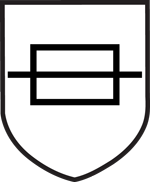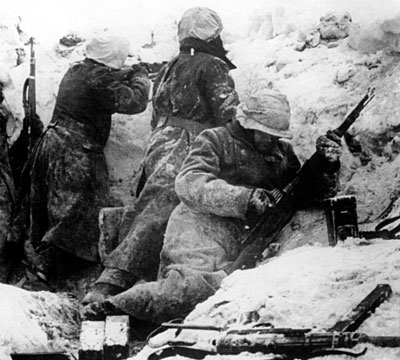A pair of food tins and a small triangle tin with yellow stamped markings used by German soldiers of 212 Volksgrenadier-Division recovered near town of osweiler, Luxemburg from the battle of the Bulge 1944-1945
This is part of a group of relics all used by the German 212 Volksgrenadier-Division as they were the only troops in the area during the offensive from 16th December until retreat in January 1945.This is a pair of food tins which have been opened and used and a triangle with yellow stamped markings and possibly a impact hole on each side they are in nice solid condition with no holes they have ripped and bent they still retains a lot of there original colour they are in relic but solid condition but overall very good, nice condition for a recovered battlefield find nicely cleaned and perfect for display or any collection these tins were recovered from rubbish pit dug either by the Germans during the battle or in battlefield clearance after the battle found near the town of osweiler in Luxemburg this area was attacked by the German 212 Volksgrenadier-Division during the battle of the Bulge in the winter of 1944-1945 during the Ardennes offensive and Hitlers last offensive in the West.
The German 212th Infantry Division was raised in August 1939 and remained on garrison duty in Germany until March 1941, when it spent three months as a coastal defense unit along the English channel. In November 1941 it was transferred to the Eastern front where it joined Army Group North near Leningrad and along the Volkhov front. It continued with Army Group North until the summer of 1944, when it had been pushed back to Lithuania and was transferred to the control of Army Group Centre. The division was destroyed there in August or September, and the survivors were immediately reconstituted as the 578th Volksgrenadier Division, which was renamed as 212th Volksgrenadier Division almost as soon as it had been formed in October 1944 from the partially formed from the 578 Volksgrenadier-Division It fought on the Western Front suffering heavy losses during the Battle of the Bulge and at the Siegfried Line, it surrendered to the US forces at the end of the war.In November 1944 the 212th Volksgrenadier Division was moved west and joined the Seventh Army across the Sauer from Echternach. It was commanded by Generalleutnant Franz Sensfuss. It was at full-strength and its morale was high. However, like many of the other Volksgrenadierdivision is only had a portion of it armoured vehicle allocation. Just five StuG assault guns were available. It also only had two of its three infantry regiments available at the start of the Ardennes offensive as the third had been put in the Seventh Army reserve. The initial attacks on 16 December 1944 went well from Echternach towards Berdorf, Dickweiler and Osweiler. The Volksgrenadiers were well behind the American lines before the command of the US 4th Infantry Division were able to react. Echternach was finally taken on 17 December after Sensfuss personally led an assault by the 212. Füsilier Bataillon. The division also took Berdorf the same day, forcing a task force of the US 10th Armored Division out of the village after bitter fighting. As more units of Patton’s US Third Army began to arrive the Volksgrenadiers were forced over to the defence. They hung on to their gains, but were eventually forced to retire and were back on their start positions by the end of January 1945.
THIS ITEM IS FREE UK SHIPPING. FOR INTERNATIONAL BUYERS IT IS A REDUCED RATE PLEASE ASK BEFORE PURCHASE.

